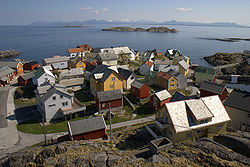This article has multiple issues. Please help improve it or discuss these issues on the talk page . (Learn how and when to remove these messages)
|

The Steveston Fisherman's Memorial is a freestanding memorial commemorating the lives and deaths of fishermen working out of Steveston, British Columbia. It takes the form of a giant fishing net needle and stands a few metres from the sea at Garry Point Park.
The memorial contains a large number of names of fishermen who died at sea, and the following words:
- May 4, 1996
- This memorial honours all the fishermen of our community who have
- lost their lives in the pursuit of their profession.
- Their courage, dedication and contribution to the development of our
- community will never be forgotten."
49°07′28″N123°11′40″W / 49.1245°N 123.194582°W

